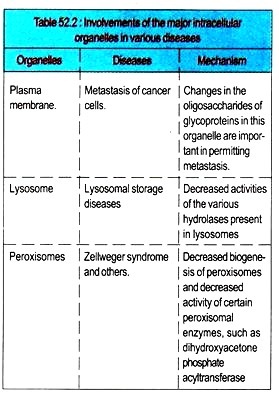ADVERTISEMENTS:
Any discussion of the uses of radioisotopes as tracers in cell biology would be incomplete without at least a brief description of autoradiography.
The materials and equipment used in this technique differ significantly from those employed in the methods previously described.
In autoradiography, the biological sample containing the radioisotope is placed in close contact with a sheet or film of photographic emulsion.
ADVERTISEMENTS:
Rays emitted by the radioisotope enter the photographic emulsion and expose it in a manner similar to visible light.
After some period of time (usually several days to several weeks), the film is developed and the location of the radioisotope in the original sample is determined from the exposure spots on the film.
Autoradiography is generally not employed as a quantitative technique (although it can be under certain conditions); instead, it is used to determine the specific region of localization of a radioactive tracer.
The method is most often used with histological sections to determine the precise location of a labeled compound in a tissue or in a cell and may be applied at either the light microscope or electron microscope level. Autoradiography has also been successfully employed in conjunction with electrophoresis, chromatography (i.e., thin-layer chromatography, paper chromatography, etc.), and other molecular fractionation methods for identifying zones containing labeled compounds (Fig. 14-9).
 Because the main goal of autoradiography is to determine the precise location of the tracer, the degree of resolution obtained in the autoradiograph is of primary importance.
Because the main goal of autoradiography is to determine the precise location of the tracer, the degree of resolution obtained in the autoradiograph is of primary importance.
Resolution depends on:
(1) The type of photographic emulsion used,
(2) The distance between the radioactive sample and the emulsion, and
(3) The nature of the emitted radiation.
A variety of photographic emulsions are available, varying in sensitivity and resolution according to the size and concentration of their silver halide grains, with the least sensitive films generally offering the highest degree of resolution. Emulsions can also be obtained that are particularly sensitive to specific types of radiation.
Because radiation is emitted in all directions from the radioactive source, the greater the distance between the film and the source, the more diffuse is the resulting image. It is therefore important to use very thin samples and to place them in very close contact with the film. The highest degree of resolution is obtained with radioisotopes that emit rays of short path length and that have a high specific ionization.
Alpha particles provide high resolution, but radioisotopes emitting this type of radiation are rarely useful in biological experiments. Autoradiographs become increasingly diffuse as the Emax of a beta emitter increases, but 3H, 14C, 35S, and 45Ca do yield good resolution. Gamma rays are inefficient as a result of their extremely high ranges and low specific ionizations.
Autoradiography may be employed with large but thin slices of tissues or organs (gross autoradiography) or with smaller pieces sectioned and prepared for light or electron microscopy. For example, the deposition of calcium in bone has been studied using 46Ca by cutting thin, flat, longitudinal slices through bone and placing them against large sheets of photographic film.
When used in conjunction with light microscopy, the paraffin-embedded tissue sections are first mounted on slides, which are then coated with photographic emulsion and stored in a light-tight, usually lead-lined box (to minimize background exposure that results from the effects of cosmic radiation and other sources of radiation).
ADVERTISEMENTS:
Several days or weeks later, after photochemical development, the sections are conventionally stained to better visualize the biological material and the distribution of radioisotope is determined microscopically from the location of dark exposure spots (called “grains”) on the section (Fig. 14- 10).
Autoradiography may also be used with thin sections of tissues prepared for electron microscopy (Fig. 14-11). This procedure involves preliminary examination and photography of the thin section followed by coating the grid with a very thin layer of photographic emulsion containing silver halide crystals of particularly small size.
After several days, the grid is developed and again examined and photographed with the electron microscope to identify those regions of the original section that contain clusters of metallic silver grains and therefore the radioactive tracer.


